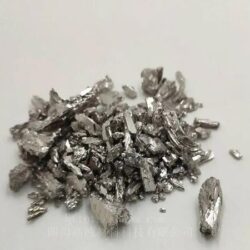1050 aluminium alloy is an aluminium-based alloy in the “commercially pure” wrought family (1000 or 1xxx series). As a wrought alloy, it is not used in castings. Instead, it is usually formed by extrusion or rolling. It is commonly used in the electrical and chemical industries, on account of having high electrical conductivity, corrosion resistance, and workability. 1050 alloy is also sometimes used for the manufacture of heat sinks, since it has a higher thermal conductivity than other alloys. It has low mechanical strength compared to more significantly alloyed metals. It can be strengthened by cold working, but not by heat treatment.
The alloy composition of 1050 aluminium is:
- Aluminium: 99.5% min
- Copper: 0.05% max
- Iron: 0.4% max
- Magnesium: 0.05% max
- Manganese: 0.05% max
- Silicon: 0.25% max
- Titanium: 0.03% max
- Vanadium: 0.05% max
- Zinc: 0.05% max
Aluminium alloy 1050 is a popular grade of aluminium for general sheet metal work where moderate strength is required.
Alloy 1050 is known for its excellent corrosion resistance, high ductility and highly reflective finish.
Applications – Alloy 1050 is typically used for:
- Chemical process plant equipment
- Food industry containers
- Pyrotechnic powder
- Architectural flashings
- Lamp reflectors
- Cable sheathing
Chemical Composition
Spec: BS EN 573-3:2009
Alloy 1050
| Chemical Element | % Present |
|---|---|
| Manganese (Mn) | 0.0 – 0.05 |
| Iron (Fe) | 0.0 – 0.40 |
| Copper (Cu) | 0.0 – 0.05 |
| Magnesium (Mg) | 0.0 – 0.05 |
| Silicon (Si) | 0.0 – 0.25 |
| Zinc (Zn) | 0.0 – 0.07 |
| Titanium (Ti) | 0.0 – 0.05 |
| Other (Each) | 0.0 – 0.03 |
| Aluminium (Al) | Balance |
Properties
| Physical Property | Value |
|---|---|
| Density | 2.71 g/cm³ |
| Melting Point | 650 °C |
| Thermal Expansion | 24 x10^-6 /K |
| Modulus of Elasticity | 71 GPa |
| Thermal Conductivity | 222 W/m.K |
| Electrical Resistivity | 0.0282 x10^-6 Ω .m |
Spec: BS EN 485-2:2008
Sheet – 0.2mm to 6.00mm
| Mechanical Property | Value |
|---|---|
| Tensile Strength | 65 -95 MPa |
| Proof Stress | 20 Min MPa |
| Hardness Brinell | 20 HB |
Alloy Designations
Aluminium alloy 1050 also corresponds to the following standard designations and specifications but may not be a direct equivalent:
AA1050A
S1B
A91050
Temper Types
The most common tempers for 1050 aluminium are:
- O – Soft
- H14 – work hardened by rolling to half hard, not annealed after rolling
Supplied Forms
Plain sheet
Plain sheet with a PVC coating on one side
Stucco sheet
Stucco sheet with a PVC coating on one side
Shate
- Sheet
Weldability
When welding 1050 to itself or an alloy from the same subgroup the recommended filler wire is 1100. For welding to alloys 5083 and 5086 or alloys from the 7XXX series, the recommend wire is 5356. For other alloys use 4043 filler wire.
Fabrication
Workability – Cold: Excellent
Machinability: Poor
Weldability – Gas: Excellent
Weldability – Arc: Excellent
Weldability – Resistance: Excellent
Brazability: Excellent
Solderability: Excellent


